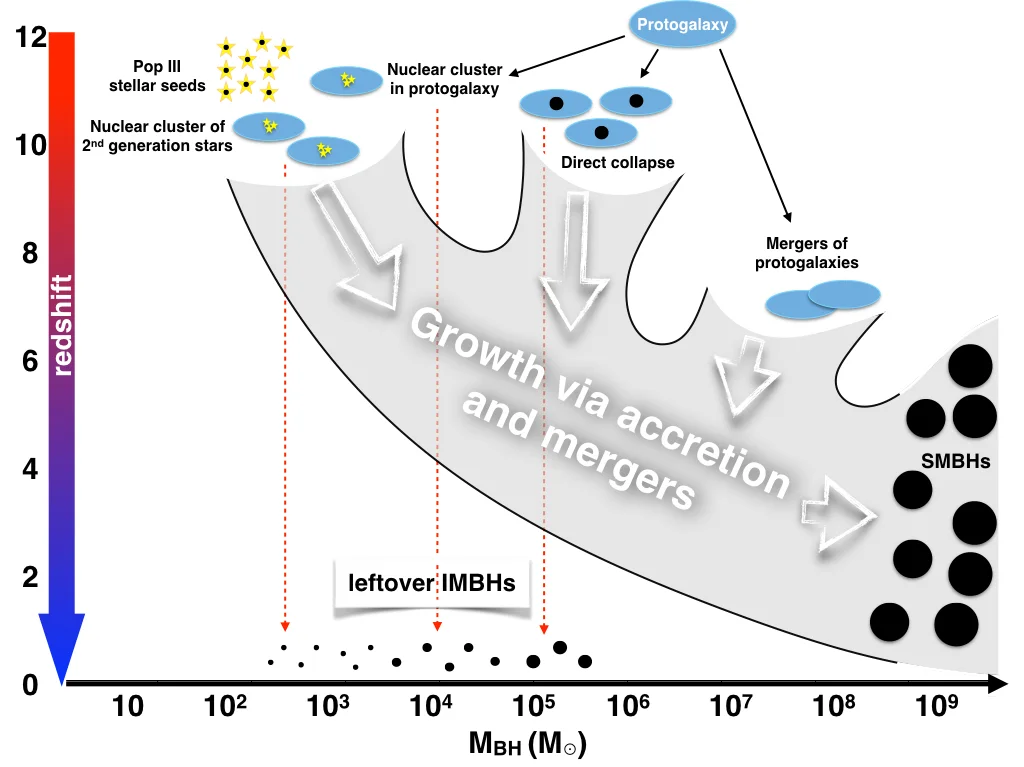The advent of gravitational wave (GW) instruments has opened up a previously invisible universe for us to study. Massive, interacting objects produce changes in the fabric of space-time which are observed as GWs. GWs are emitted when two black holes (BHs; or other massive compact objects such as neutron stars) orbit each other and merge together. Over ten merger events have been detected so far by LIGO, Virgo, and KAGRA through the end of their third observing run. Moreover, the Gravitational Wave Transient Catalog by LIGO/Virgo (
Abbott et al. 2016 ) has significantly increased the number of known GW events which has enabled us to place new and powerful constraints on cosmology, fundamental physics, and other fields of importance (e.g.,
Abbott et al. 2021).
These discoveries are important because some of the merger components have masses in excess of 50 M
⊙, meaning they are over the mass range prohibited by the pair-instability process (e.g.,
Spera et al. 2017,
Mapelli et al. 2020). A possible explanation is that the merger components might be a second or higher generation BHs, as has been theorized for GW190521 (
Fragione, Loeb & Rasio, 2020).
A number of recent analyses have examined the scenarios in which we may find BHs greater than the limit of 50 M
⊙ (e.g.,
Umeda2020,
Gonzalez et al. 2021). One such theory is that of a runaway merger of stars in dense stellar clusters. A merger between a main-sequence star and an evolved star leads to the formation of a helium core that could survive the supernova explosion and result in a BH more massive than could ever be formed through single-star evolution (e.g.,
Mapeli2016,
Gonzalez et al. 2021). Moreover, a massive object undergoing multiple collisions can become a very massive blue straggler star (with mass > 100M
⊙). This blue straggler may then collapse into a intermediate-mass black hole (IMBH). The runaway of stellar mass is believed to be closely associated with the collisional runaway processes that may lead to the formation of IMBHs, with masses in the range ≅ 100 - 10
5M
⊙ (for a review see
Greene, Stader & Ho 2020).

